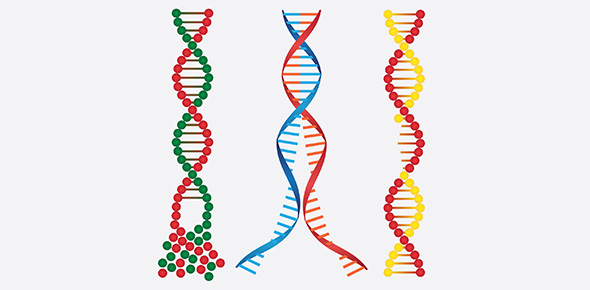Related Flashcards
Related Topics
Cards In This Set
| Front | Back |
|
What are the three factors that cause allele frequencies?
|
The three factors that cause allele frequencies are mutation, genetic variation, and sexual reproduction.
|
|
What are discrete and quantitative characters?
|
Discrete characters are either-or genes at a single locus with many alleles. Quantitative characters vary along a continuum and have two or more genes that affect one phenotypic character.
|
|
What is average heterozygosity?
|
Average zygosity is the average percent of loci that are heterozygous. It is measured using gel electrophoresis.
|
|
What is geographic variation?
|
Geographic variation is the difference in genetic composition of separate populations. It is analyzed using karyotypes.
|
|
What is cline?
|
Cline is a graded change in a character along a geographic axis.
|
|
How can point mutations be harmless?
|
Point mutations can be harmless 1) if they are in a noncoding region, 2) if they code for the same amino acid despite the change, or 3) if a change in the amino acid that gets coded doesn't affect gene expression.
|
|
How often do mutations occur, and why are they so high in viruses?
|
Mutations occur once per one hundred thousand genes per generation. The short generation rate of viruses leads to a high rate of mutation.
|
|
How does sexual reproduction lead to gene diversity?
|
Sexual reproduction leads to gene diversity through crossing over, independent assortment of chromosomes, and fertilization.
|
|
What is the Hardy-Weinberg equation? What do each of the variables mean?
|
P2+2PQ+Q2=1 is the Hardy-Weinberg equation. P2= both dominant. 2PQ= heterozygous. Q2= both recessive.
|
|
What are the conditions for the Hardy-Weinberg equation?
|
The four conditions for the Hardy-Weinberg equation to work are: no mutations, no natural selection, no gene flow, random mating, and extreme population size.
|
|
What are the different types of selection?
|
The different types of selection are: directional (favors one phenotypical extreme), disruptive (favors both phenotypical extremes), and stabilizing (favors the middle).
|
|
What are: sexual selection, sexual dimorphism, intrasexual selection, and intersexual selection?
|
Sexual selection: More likely to obtain mates. Sexual dimorphism: differences in the two sexes beyond the primary sexual characteristics. Intrasexual selection: selection within the same sex caused by competition. Intersexual selection: mate choice.
|
|
What is frequency-dependent selection?
|
Frequency-dependent selection: fitness declines because a certain trait has become common.
|






